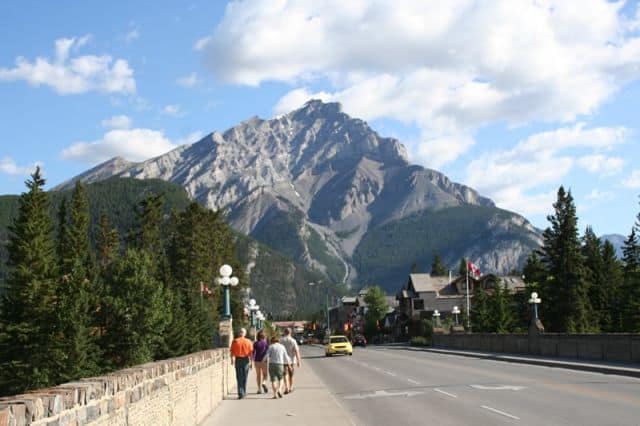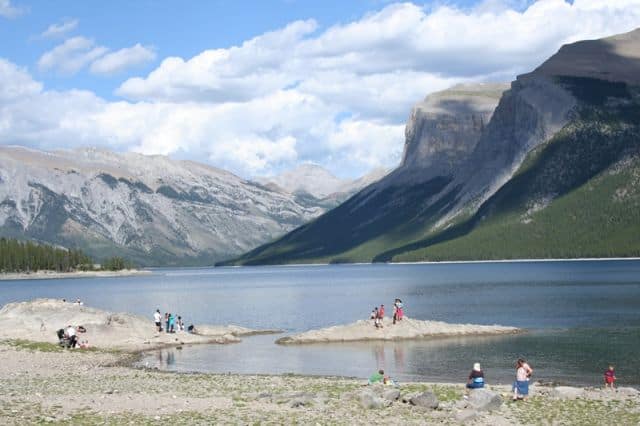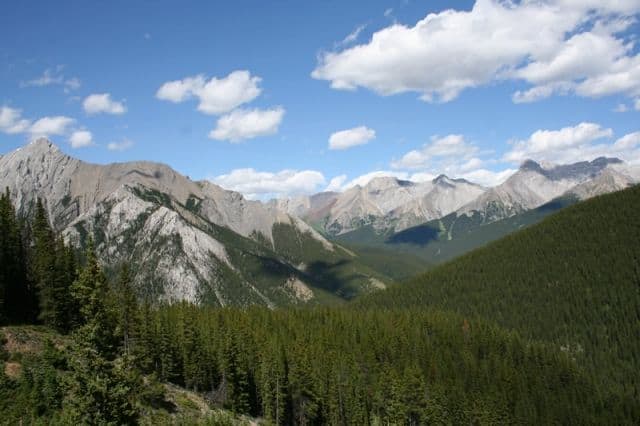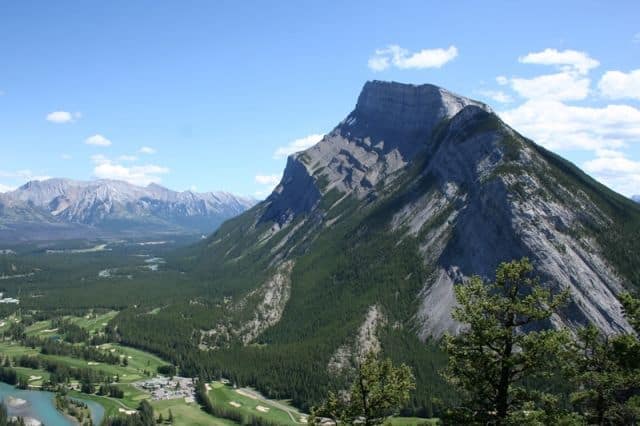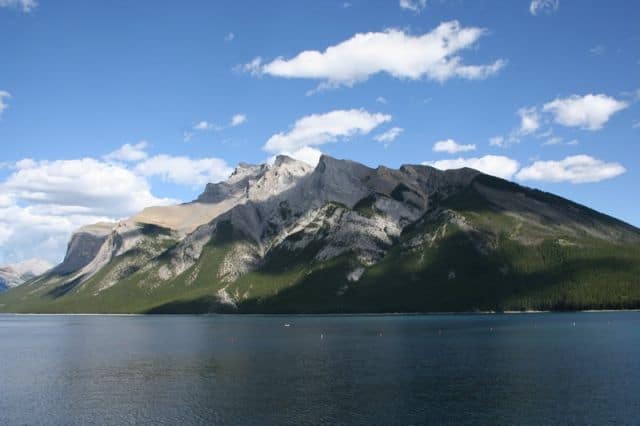Banff National Park
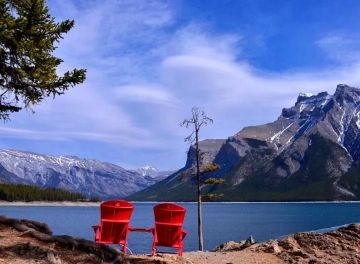
Park Size: 6,641 sq. km.
Park Amenities:
Banff National Park is Canada's oldest national park, the birth place of Canada’s national parks system and one of the most visited year-round mountain adventure destinations in the country. The park was first established in 1885. The boundaries of the park were created following along the same lines as the Continental Divide and the provincial border between Alberta and British Columbia, Canada. This included large sections of the beautiful and famous Rocky Mountains of Canada. Today, the Banff Natioanl Park measures 6,641 sq. km. (2,564 miles).
Banff National Park is a UNESCO World Heritage Site which protects over 20,000 square kilometres (7,700 sq. miles) of the Canadian Rocky Mountains. People from all around the world travel to the park for the scenery and possible wildlife sightings. Some of those same arrivals also come for the adventures and activities the park provides including golfing, hiking, kayaking, canoeing, backpacking, rock climbing, horseback riding, fishing, mountain biking, cycling, river rafting, birdwatching, wilderness camping, caving, cross country skiing, downhill skiing, heli-skiing, snowboarding, snowmobiling, snowshoeing, ice fishing and more!
There are two mountain villages located in the Banff National Park. The Villages of Banff and Lake Louise, both provide accommodations, tours and services important to travellers and also provide an opportunity to stock up on supplies for an upcoming adventure or for continueing on your road trip. Both villages are engulfed in nature and standing in the backyard of year round wilderness activities.
Banff National Park was first created to protect and preserve the local wildlife, flora, fauna and the mineral hot springs near the Village of Banff, Alberta. Since 1885 the Banff National Park has grown to include over 1,500 kilometres of recreational trails for hiking, backpacking, horseback riding, xc skiing and snowshoeing. There are ski mountains, day use picnic areas, summit lookouts, camping, mountain resorts, alpine teahouses, lakes, waterfalls, history and whole lot more. In fact the park is home to 7 National Historic Sites of Canada including the Cave and Basin, Fairmont Banff Springs Hotel, Cosmic Ray Station, Skoki Lodge, Abbot Pass Hut, Howse Pass and Banff Park Museum.
During the summer and winter months Banff National Park provides endless opportunities for casual to extreme outdoor activities. There are many tours, guides and instructors available for guided adventures for those not accustomed to the environment. For those who are comfortable in their activity there are trail maps, sport shops and equipment rentals for self guided enthisiasts.
The Banff National Park, summer and winter, provides some of the most stunning wilderness mountain views of glaciers. The Waputik Glacier and Icefield is the largest glacier measuring 80 square kilometres. The Columbia Icefield is the most visited glacier in the park welcoming tour groups. There are over 1000 glaciers in the park including others like the Victoria, Peyto, Bow, Crowfoot, Saskatchewan, Wenkchemna, Horseshoe, Hector, Lefroy and Lyell Glaciers. Many are off limits. Some are accessable with the right experience and equipment.
While in the wilderness exploring or driving the roads in the Banff National Park please keep an eye out for wildlife. Wildlife in the park cross the same roads you drive, follow the same hiking trails you walk and visit the same lakes and rivers you paddle. Never approach wildlife and never feed wildlife. The park is home for many wildlife species including some very large ones like grizzly bears, black bears, moose, cougars, wolverines, wolves, caribou, mountain goats, bighorn sheep, mule deer and elk. And it is home to some smaller species of wildlife like foxes, marmots, pikas beavers, porcupines and squirrels.
The Banff National Park is an alpine mountain park. The weather changes quickly in the mountains. The temperatures tend to drop quickly the higher elevations you explore. It is important to plan and prepare well. Always dress in layers, bring lots of liquids and wear good footwear and use trusted equipment when exploring in the mountains. ALWAYS tell someone where you are going.
Throughout Banff National Park there are serviced campgrounds and there are remote wilderness campsites. In total there are 2,468 campsites. Banff National Park requires all who stop in the park to pay an admission price for a park pass. Alberta park rangers, especially during the summer, check for park passes.
Explore Banff National Park in Alberta, Canada
Visit the Banff and Lake Louise Villages
Address:
How To Get ToBanff National Park
:From British Columbia: From Golden, British Columbia, Canada travel Highway #1 east through Yoho National Park to the Banff National Park. From Invermere and Radium Hot Springs, British Columbia travel east on Highway #93, through Kootenay National Park to the Banff National Park in Alberta.


